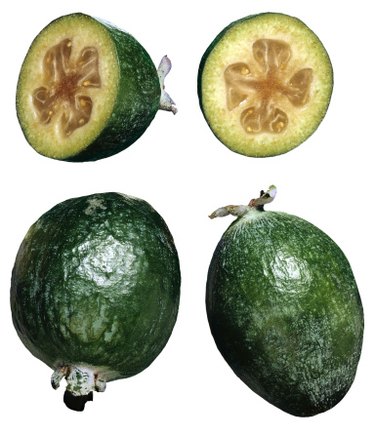
The difference between a guayaba and a guava is basically phonetic--both refer to the same plant. Guava is a sweet fruit that is grown in tropical climates and environments that stay warm year-round. This fruit is the product of the guava tree, which is part of the myrtle family (Myrtaceae), genus Psidium—consisting of 100 species of small trees and tropical shrubs.
Background
Video of the Day
The guava tree is thought to have originated in Latin America around Southern Mexico and the Central American region. Since 1526, the fruit has been cultivated throughout tropical areas in Latin America and the Caribbean. In 1847 the guava tree was introduced the Florida, and from there to Guam and the East Indies; it is likely that guava was later brought to Africa and Asia after being first introduced to these areas. In the early 19th century, guava was introduced to Hawaii, and is now grown throughout the Pacific Islands.
Video of the Day
Guayaba
The word guayaba is a Spanish derivative of "guayabo," the original word used for the guava tree by the Arawak Indians. The Arawak Indians are natives of the Greater Antilles and South Americas. When Christopher Columbus arrived in the Americas, his first human encounter was with the Arawak people.
Other Names
While languages like Romanian, Russian, Swedish, Norwegian, and Danish have adopted the word guava into their lexicon, other languages have created their own words for the guava fruit. Some other names that guava is known by in other languages include jwafa (Arabic), guaba (Japanese), bayabas (Tagalog), amrood (Punjabi), and peru (Marathi).
Uses
People around the world enjoy the guava fruit in a variety of fashions. The fruit can be eaten raw or with salt and pepper; dipped in preserved prune powder; made into candies, preserves, jellies and jams; made into juices; and used in sauces and other salted products as a tomato substitute.